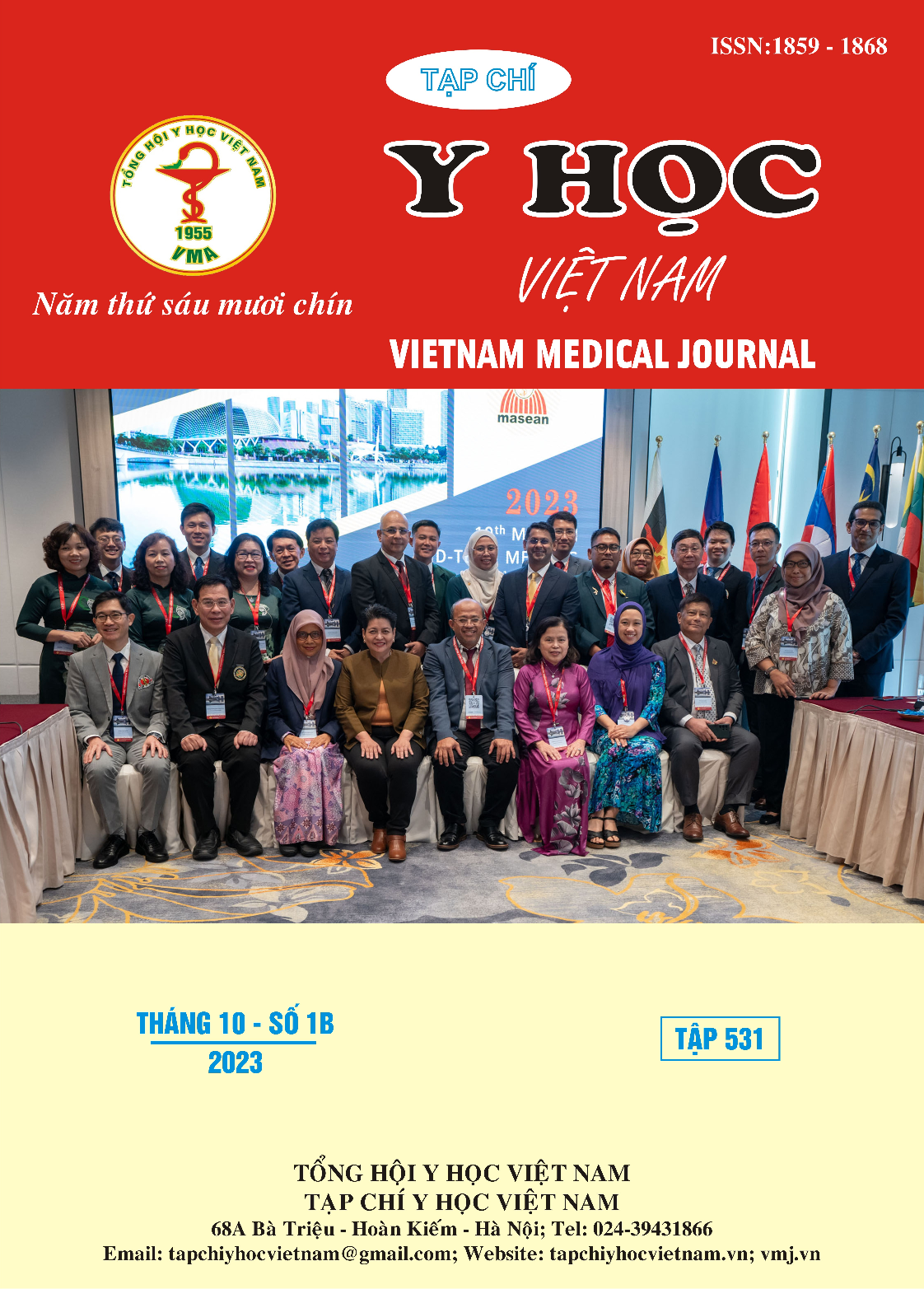CURRENT STATUS OF CARIES AND SOME RELATED FACTORS ON PATIENTS EXAMINED AT THE DEPARTMENT OF ODONTO-STOMATOLOGY, BACH MAI HOSPITAL IN 2022-2023
Main Article Content
Abstract
Objective: To describe the rate of tooth decay and some related factors in patients at Bach Mai hospital in 2022-2023. Methods: A cross-sectional descriptive study on 387 outpatients. To determine the dental indicators: index of decayed (D), missing (M), filled (F) teeth, DFMT, prevalence of dental caries. Using multivariate logistic regression to identify factors related to caries prevalence. Results: Out of 387 respondents, female gender accounted for the majority, 61.0%. There was 54 people who have diabetes as a background disease, accounting for 14%. The age group from 35 to 64 years old accounted for the majority, nearly 50%. The prevalence of dental caries in the study was 65.1%. The high rate of tooth decay at the age of 6-16 years old accounts for 75%.The average DFMT index is 3.2 points, of which the age group over 65 has the highest DFMT with an average of 6.7. Factors related to the rate of tooth decay include diabetes, not having regular dental check-ups, age group from 35 to 64 years old. Conclusion: The oral health status of outpatients is still a worrisome health issue. More studies are needed to clarify the factors associated with oral health problems in this population.
Article Details
Keywords
tooth decay, index of decayed
References
2. Abbass MM, AbuBakr N, Radwan IA, et al. The potential impact of age, gender, body mass index, socioeconomic status and dietary habits on the prevalence of dental caries among Egyptian adults: a cross-sectional study. F1000Research. 2019;8
3. Shiferaw A, Alem G, Tsehay M, Kibret GD. Dental caries and associated factors among diabetic and nondiabetic adult patients attending Bichena Primary Hospital’s Outpatient Department. Frontiers in Oral Health. 2022;3:938405.
4. Khahro M, Shaikh Q, Baloch M, Channa SA, Shah A. Frequency of dental caries among patients with type II diabetes mellitus. The Professional Medical Journal. 2019;26(06):865-869.
5. Costa SM, Vasconcelos M, Haddad JPA, Abreu MHN. The severity of dental caries in adults aged 35 to 44 years residing in the metropolitan area of a large city in Brazil: a cross-sectional study. BMC Oral Health. 2012;12:1-11.
6. Trịnh Đình Hải, Nguyễn Thị Hồng Minh, Trần Cao Bình. Điều tra sức khỏe răng miệng toàn quốc. Nhà xuất bản Y học; 2019.
7. Stennett M, Tsakos G. The impact of the COVID-19 pandemic on oral health inequalities and access to oral healthcare in England. British Dental Journal. 2022;232(2):109-114.
8. Matsuyama Y, Isumi A, Fujiwara T. Impacts of the COVID-19 pandemic exposure on child dental caries: difference-in-differences analysis. Caries Research. 2022;56(5-6):546-554.
9. Phạm Minh Khuê, Phạm Văn Trọng, Trần Thị Thúy Hà và cs. Một số yếu tố liên quan đến bệnh sâu răng của học sinh tại trường tiểu học Lê Văn Tám, Thành phố Hải Phòng năm 2018. Tạp chí Y học dự phòng. 2018;28(9):115-118.
10. Jiang R, Yu J, Islam R, Li X, Nie E. Dental Caries Prevention Knowledge, Attitudes, and Practice among Patients at a University Hospital in Guangzhou, China. Medicina. 2023;59(9):1559.


